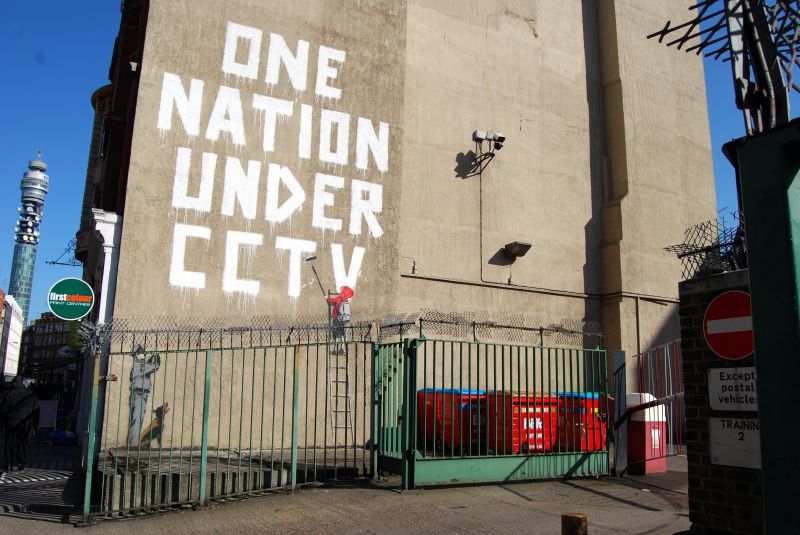Table of Contents |
The art that we’re talking about today dates from between 2000 and 2010.

Graffiti art is a form of post studio practice given that it takes place out of studio and on the street. As an art form, it’s an example of the recent trends, within the last decade of so, for some artists moving away from the isolation of the studio in order to integrate their work within the greater social sphere.

Graffiti
Lisbon, Portugal
Banksy is a moniker for a graffiti artist who originated in Bristol, England. Despite the controversy regarding graffiti as art or vandalism, Banksy has been able to secure his reputation as one of the most important artists in this genre. Although graffiti can take on the form of vandalism, particularly with the prevalence of tagging, as it’s called in larger urban settings, Banksy’s work carries a certain political tone with it that addresses a particular issue and brings it to the public’s attention.

2008
Graffiti
London, England
Although he began as a freestyle graffiti artist, around 2000, Banksy changed to premade stencils, allowing him to put up his work more quickly and move on. It’s this subversive nature combined with the concept of raising social awareness that makes his work a form of interventionist and graffiti art.

2005
Graffiti
Israel
Intervention as art can take on other forms such as Hacktivism. As artwork, computers are hacked into in order to bring awareness to a particular issue. The Electronic Disturbance Theater is a hacktivist group known for conducting virtual sit-ins, and Anonymous is another group associated with Hacktivism.
Intervention as art can also be in the form of performances. With the ubiquity and availability of the Internet, sociopolitical messages can potentially reach millions or even billions of people. Critical Art Ensemble and the Yes Men are two groups that create social awareness of particular issues through a process called tactical media. This is a form of media activism where short interventionist messages are directed at a particular issue to create social awareness.
As opposed to a broader media outlet that covers a broad range of stories, tactical media specialists, such as Critical Art Ensemble, could be considered more surgical. Their targets are very specific, and they are looking to elicit a response and/or action from their audience.

2010
Performance
In their performance of “Radiation Burn,” Critical Art Ensemble was addressing what they considered media and government scare tactics about the dangers posed by dirty bombs and their inevitable detonation. Believing it was an unnecessary and intentionally alarming proclamation by those groups, Critical Art Ensemble created a satirical video about how to detonate a dirty bomb.
Gabriel Orozco’s “Mobile Matrix” is a fascinating piece that explores the relationship between different parts of a biological machine.

2006
Graphite on whale bone
In this case, you can see he uses a humpback whale. He was able to secure a complete skeleton from the Mexican government and, with a team of artists, drew concentric circles from joints and other specific locations that overlapped and crossed each other, like ripples on the water.
In this simple yet time-consuming process, he’s visualized the unseen harmony that exists between parts of a biological machine, casting light on the inherent and covert beauty that exists within nature. Perhaps he was even rallying support for conservation all without saying a word.
Source: This work is adapted from Sophia author Ian McConnell